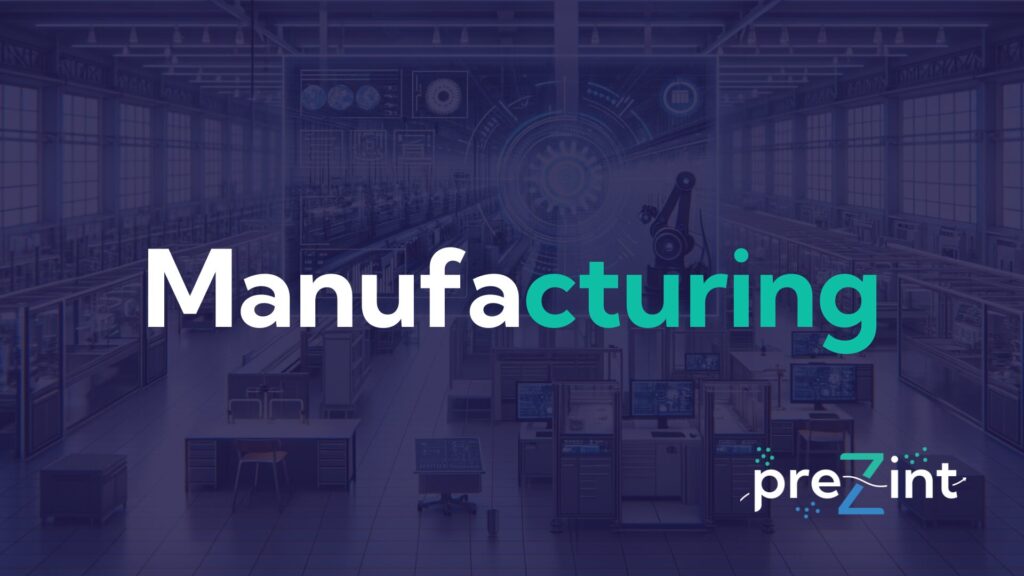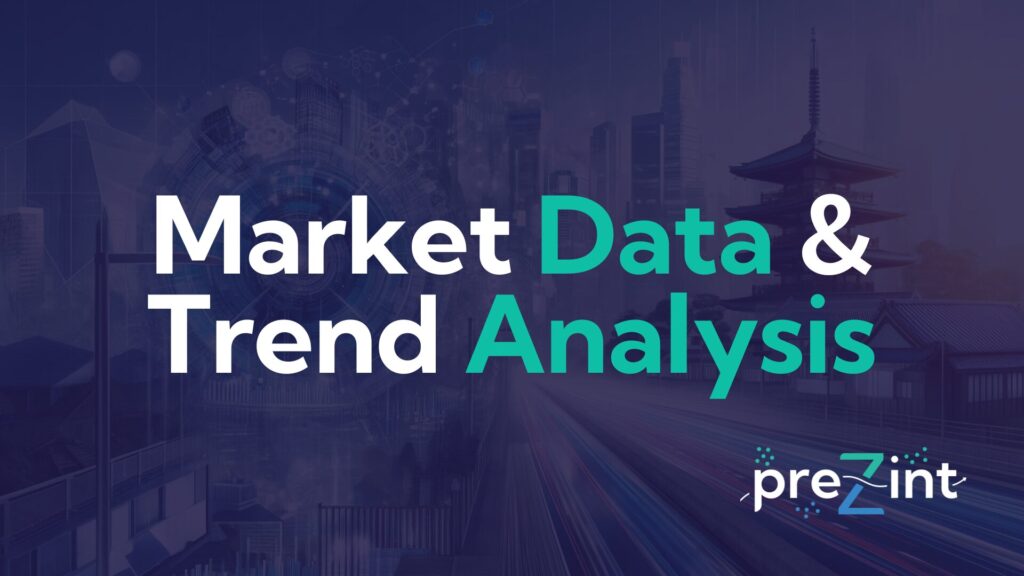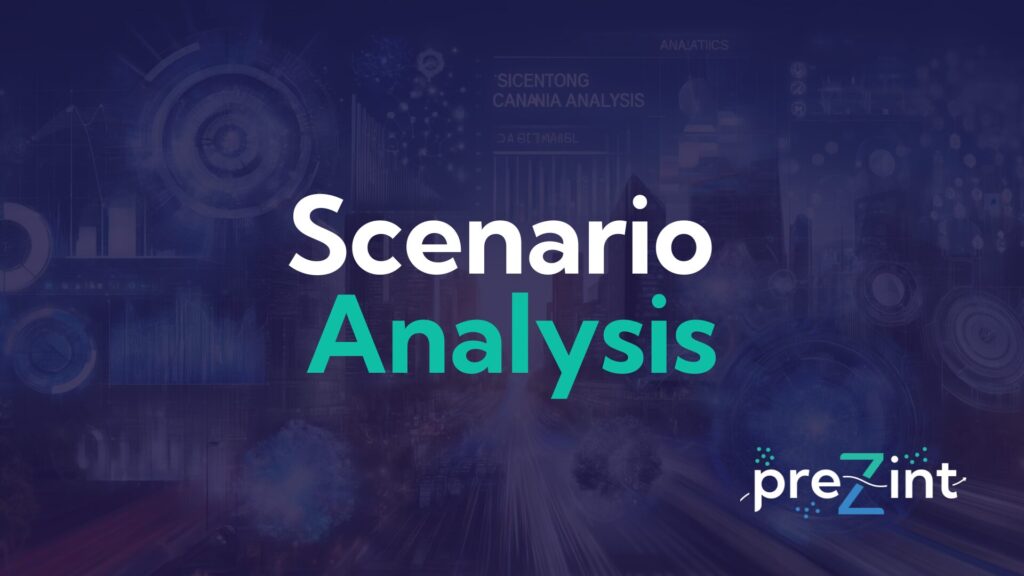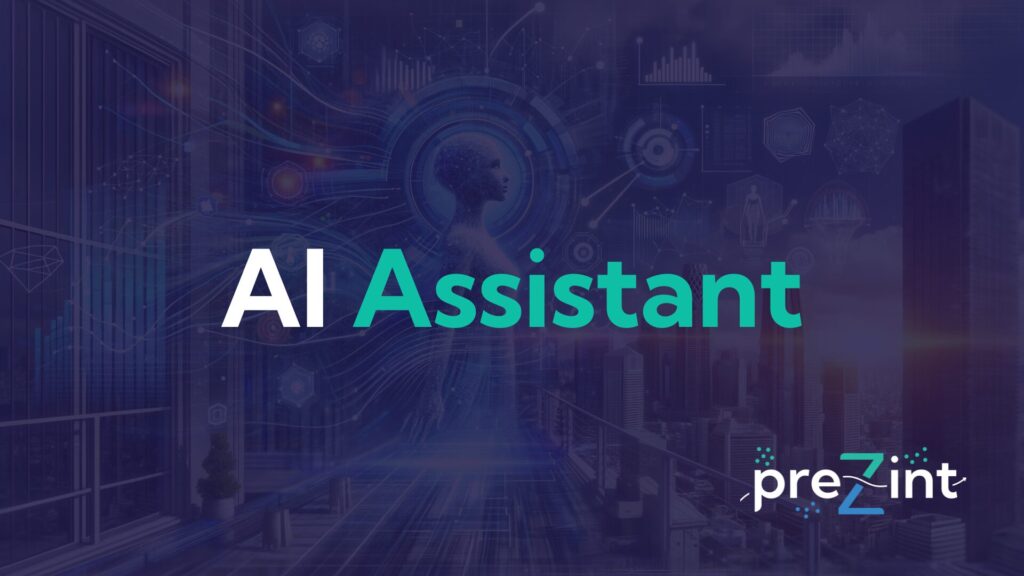Elevating Manufacturing
Processes With preZint
Japanese manufacturers face critical challenges such as supply
chain disruptions, the urgent need for digital transformation,
and the pressure to enhance production efficiency while reducing
costs.
chain disruptions, the urgent need for digital transformation,
and the pressure to enhance production efficiency while reducing
costs.
Managing data silos, ensuring efficient cost management, and
maintaining regulatory compliance are top priorities.
maintaining regulatory compliance are top priorities.
preZint addresses these issues head-on, offering a comprehensive
solution designed to streamline operations, improve decision-making,
and drive sustainable growth in the manufacturing sector.
solution designed to streamline operations, improve decision-making,
and drive sustainable growth in the manufacturing sector.
Challenges In Manufcaturing
Data Silos
Manufacturing companies frequently struggle with data silos, where
critical information is fragmented across multiple systems and platforms:
critical information is fragmented across multiple systems and platforms:
Fragmented Data: Different departments store data in separate systems
such as ERP (Enterprise Resource Planning), MES (Manufacturing Execution
Systems), SCM (Supply Chain Management), and QMS (Quality Management
Systems), making it difficult to consolidate and analyze information holistically.
such as ERP (Enterprise Resource Planning), MES (Manufacturing Execution
Systems), SCM (Supply Chain Management), and QMS (Quality Management
Systems), making it difficult to consolidate and analyze information holistically.
Manual Data Transfer: The process of manually transferring data often
involves extracting data from one system, such as downloading CSV files
from an ERP system, and then manually entering or uploading this data
into another system like MES or QMS. This can lead to errors, delays, and
inefficiencies as each manual step introduces the potential for mistakes
and consumes valuable time.
involves extracting data from one system, such as downloading CSV files
from an ERP system, and then manually entering or uploading this data
into another system like MES or QMS. This can lead to errors, delays, and
inefficiencies as each manual step introduces the potential for mistakes
and consumes valuable time.
Limited Visibility: Different systems may not communicate well with
each other, causing delays in data updates and a fragmented view of
the production process. For example, the ERP system may track
inventory levels while the MES manages production schedules.
Without integration, it’s challenging to understand how inventory
levels directly affect production efficiency. Additionally, if QMS
data on defect rates is not easily accessible, it becomes difficult to
correlate quality issues with specific production runs or supplier
batches.
each other, causing delays in data updates and a fragmented view of
the production process. For example, the ERP system may track
inventory levels while the MES manages production schedules.
Without integration, it’s challenging to understand how inventory
levels directly affect production efficiency. Additionally, if QMS
data on defect rates is not easily accessible, it becomes difficult to
correlate quality issues with specific production runs or supplier
batches.
Inconsistent Data Formats: Different systems often store data
in varying formats, such as PDFs, TXT files, spreadsheets, and
proprietary database formats. Integrating these formats into a
single, actionable dataset is complex and time-consuming. For
example, a production report in PDF might need to be manually
transcribed into a spreadsheet, and sales forecasts in TXT files
might need to be imported into SCM systems, all of which
complicates data analysis and decision-making.
in varying formats, such as PDFs, TXT files, spreadsheets, and
proprietary database formats. Integrating these formats into a
single, actionable dataset is complex and time-consuming. For
example, a production report in PDF might need to be manually
transcribed into a spreadsheet, and sales forecasts in TXT files
might need to be imported into SCM systems, all of which
complicates data analysis and decision-making.
These silos hinder the ability to access real-time, accurate data,
leading to inefficiencies and missed opportunities for optimization.
The inability to quickly consolidate and analyze data from multiple
sources can delay critical decisions and reduce overall operational
efficiency.
leading to inefficiencies and missed opportunities for optimization.
The inability to quickly consolidate and analyze data from multiple
sources can delay critical decisions and reduce overall operational
efficiency.
Cost Management
Cost management in manufacturing is a complex and multifaceted
challenge involving the meticulous tracking and optimization of
various expenses. Here are some of the common issues faced:
challenge involving the meticulous tracking and optimization of
various expenses. Here are some of the common issues faced:
Outdated Systems and Manual Entries: Many manufacturing firms
still rely on legacy systems and manual data entry methods to track
costs. For instance, production supervisors might record raw material
costs in a spreadsheet, while labor costs are logged in a separate HR
software. This fragmented approach can lead to delays in data
consolidation and increases the risk of errors, such as duplications or
omissions in cost entries.
still rely on legacy systems and manual data entry methods to track
costs. For instance, production supervisors might record raw material
costs in a spreadsheet, while labor costs are logged in a separate HR
software. This fragmented approach can lead to delays in data
consolidation and increases the risk of errors, such as duplications or
omissions in cost entries.
Fluctuating Costs: Raw materials, labor, and overhead expenses can
vary significantly due to market volatility, changes in supplier pricing,
and shifts in demand. Traditional cost-tracking systems may not provide
real-time updates, making it difficult for manufacturers to adjust budgets
promptly. For example, if a sudden spike in raw material prices occurs,
outdated systems might not reflect this change quickly enough, leading
to budget overruns.
vary significantly due to market volatility, changes in supplier pricing,
and shifts in demand. Traditional cost-tracking systems may not provide
real-time updates, making it difficult for manufacturers to adjust budgets
promptly. For example, if a sudden spike in raw material prices occurs,
outdated systems might not reflect this change quickly enough, leading
to budget overruns.
Inconsistent Data Formats: Cost data is often stored in various formats
across different systems, such as ERP software, spreadsheets, and proprietary
accounting tools. This inconsistency can hinder the ability to aggregate and
analyze costs effectively. For example, converting data from PDFs or text files
into a unified format suitable for detailed analysis can be a labor-intensive
process.
across different systems, such as ERP software, spreadsheets, and proprietary
accounting tools. This inconsistency can hinder the ability to aggregate and
analyze costs effectively. For example, converting data from PDFs or text files
into a unified format suitable for detailed analysis can be a labor-intensive
process.
Limited Insights and Predictive Capabilities: Traditional cost management
systems often provide basic insights and lack advanced predictive capabilities.
Manufacturers might struggle to identify cost-saving opportunities or predict
future expenses accurately. For instance, they might only have access to
historical cost data without the ability to simulate various scenarios that account
for external factors like changes in labor laws or fluctuations in energy prices.
systems often provide basic insights and lack advanced predictive capabilities.
Manufacturers might struggle to identify cost-saving opportunities or predict
future expenses accurately. For instance, they might only have access to
historical cost data without the ability to simulate various scenarios that account
for external factors like changes in labor laws or fluctuations in energy prices.
These challenges can result in inefficient cost management practices, budget
overruns, and missed opportunities for cost optimization. Having a more
integrated, real-time, and analytical approach is crucial for manufacturers
to manage costs effectively and stay competitive.
overruns, and missed opportunities for cost optimization. Having a more
integrated, real-time, and analytical approach is crucial for manufacturers
to manage costs effectively and stay competitive.
Regulatory Compliance
Regulatory compliance in manufacturing is critical for ensuring adherence
to environmental, safety, and labor standards. However, managing these
requirements can be challenging due to several issues:
to environmental, safety, and labor standards. However, managing these
requirements can be challenging due to several issues:
Frequent Regulatory Changes: Manufacturers must continuously adapt to
new and evolving regulations in areas such as environmental standards,
safety protocols, and labor laws. Keeping up with these changes requires
constant monitoring and updating of internal processes. For example, a
sudden change in environmental regulations might necessitate adjustments in
waste management practices, which can be difficult to implement quickly
without prior warning.
new and evolving regulations in areas such as environmental standards,
safety protocols, and labor laws. Keeping up with these changes requires
constant monitoring and updating of internal processes. For example, a
sudden change in environmental regulations might necessitate adjustments in
waste management practices, which can be difficult to implement quickly
without prior warning.
Geographical Variability: Manufacturers operating in multiple regions
face the challenge of complying with different sets of regulations in each
location. This necessitates tailored compliance strategies for each market,
which can be resource-intensive and complex to manage. For instance,
environmental compliance in Japan might differ significantly from that in
the United States, requiring different documentation and operational changes.
face the challenge of complying with different sets of regulations in each
location. This necessitates tailored compliance strategies for each market,
which can be resource-intensive and complex to manage. For instance,
environmental compliance in Japan might differ significantly from that in
the United States, requiring different documentation and operational changes.
Predicting Regulatory Changes: Anticipating potential regulatory changes
is crucial for manufacturers to prepare and adapt their processes in advance.
Without early predictions, companies can be caught off guard by new regulations,
leading to rushed implementations and higher costs. For example, new safety
regulations could require immediate changes in production processes, causing
operational disruptions if not anticipated.
is crucial for manufacturers to prepare and adapt their processes in advance.
Without early predictions, companies can be caught off guard by new regulations,
leading to rushed implementations and higher costs. For example, new safety
regulations could require immediate changes in production processes, causing
operational disruptions if not anticipated.
Complex Documentation and Reporting: Regulatory compliance often
involves extensive documentation and reporting requirements. Maintaining
accurate records of compliance activities, such as safety inspections, waste
disposal records, and employee training sessions, can be cumbersome and
time-consuming. The complexity increases when data is spread across various
systems and formats, making it difficult to compile and analyze comprehensively.
involves extensive documentation and reporting requirements. Maintaining
accurate records of compliance activities, such as safety inspections, waste
disposal records, and employee training sessions, can be cumbersome and
time-consuming. The complexity increases when data is spread across various
systems and formats, making it difficult to compile and analyze comprehensively.
Risk of Non-Compliance: Non-compliance with regulatory requirements
can lead to severe consequences, including financial penalties, legal action,
and reputational damage. For instance, failing to adhere to health and
safety regulations can result in workplace accidents, leading to lawsuits
and loss of consumer trust.
can lead to severe consequences, including financial penalties, legal action,
and reputational damage. For instance, failing to adhere to health and
safety regulations can result in workplace accidents, leading to lawsuits
and loss of consumer trust.
Data Integration Challenges: Compliance data is often stored in different
systems and formats, making it difficult to compile a comprehensive view
of compliance status. This fragmentation hinders the ability to gain holistic
insights and identify areas for improvement. For example, integrating
environmental compliance data from various sources can be challenging
without a unified system.
systems and formats, making it difficult to compile a comprehensive view
of compliance status. This fragmentation hinders the ability to gain holistic
insights and identify areas for improvement. For example, integrating
environmental compliance data from various sources can be challenging
without a unified system.
These challenges highlight the need for a robust, integrated, and
real-time system to manage regulatory compliance effectively.
real-time system to manage regulatory compliance effectively.
How preZint Supports
Manufacturing
Centralized Data Management
Solution: preZint integrates diverse data sources from various systems
within the manufacturing process into a single, unified platform. This
integration is achieved using advanced connectors that can handle
different data formats and systems, including ERP systems, MES, QMS,
and IoT devices. Additionally, our personnel come on-site to assist in
connecting these data sources, ensuring the process is smooth and
customized to your specific needs. This complex process allows for
preZint to be updated in real-time, providing continuous, accurate data.
within the manufacturing process into a single, unified platform. This
integration is achieved using advanced connectors that can handle
different data formats and systems, including ERP systems, MES, QMS,
and IoT devices. Additionally, our personnel come on-site to assist in
connecting these data sources, ensuring the process is smooth and
customized to your specific needs. This complex process allows for
preZint to be updated in real-time, providing continuous, accurate data.
Benefit: This real-time integration eliminates data silos, ensuring that
manufacturing teams have immediate access to accurate, consolidated
data. It significantly reduces the manual effort required to compile and
verify information, turning a process that typically takes weeks or even
months into a matter of minutes. This enables faster and more informed
decision-making.
manufacturing teams have immediate access to accurate, consolidated
data. It significantly reduces the manual effort required to compile and
verify information, turning a process that typically takes weeks or even
months into a matter of minutes. This enables faster and more informed
decision-making.
Example: A manufacturing team dealing with multiple production lines
can use preZint to aggregate data from each system, including production
schedules, quality control metrics, and equipment status. This unified view
allows the team to quickly identify potential production bottlenecks by
monitoring KPIs such as cycle time, downtime, and defect rates. preZint
can be customized to display any KPI the team deems critical, enabling
proactive management and optimization of the production process.
can use preZint to aggregate data from each system, including production
schedules, quality control metrics, and equipment status. This unified view
allows the team to quickly identify potential production bottlenecks by
monitoring KPIs such as cycle time, downtime, and defect rates. preZint
can be customized to display any KPI the team deems critical, enabling
proactive management and optimization of the production process.
Advanced Cost Analytics
Solution: preZint not only connects to internal data sources but also
integrates with external data, providing a comprehensive view of all
cost-related factors. The platform enables the running of complex
scenario analyses that would typically take weeks to months to complete,
delivering results in minutes. For example, analysts can simulate the impact
of multi-variable factors such as supply chain disruptions due to geopolitical
events combined with labor cost changes across multiple regions. Additionally,
preZint includes an AI assistant similar to ChatGPT, which can answer specific
questions about graphs, charts, and the system’s reasoning behind its analyses.
integrates with external data, providing a comprehensive view of all
cost-related factors. The platform enables the running of complex
scenario analyses that would typically take weeks to months to complete,
delivering results in minutes. For example, analysts can simulate the impact
of multi-variable factors such as supply chain disruptions due to geopolitical
events combined with labor cost changes across multiple regions. Additionally,
preZint includes an AI assistant similar to ChatGPT, which can answer specific
questions about graphs, charts, and the system’s reasoning behind its analyses.
Benefit: This comprehensive and rapid analysis allows manufacturing teams
to spend more time planning and less time gathering and integrating data.
With the ability to explore a wide range of scenarios and receive real-time
insights, manufacturers can make more informed decisions, optimize budgets,
and reduce unnecessary expenditures. This strategic approach can lead to
significant cost savings and better financial outcomes.
to spend more time planning and less time gathering and integrating data.
With the ability to explore a wide range of scenarios and receive real-time
insights, manufacturers can make more informed decisions, optimize budgets,
and reduce unnecessary expenditures. This strategic approach can lead to
significant cost savings and better financial outcomes.
Example: A manufacturing company aiming to optimize its production costs
can use preZint to run a complex scenario where they simulate the impact of
a sudden geopolitical event that disrupts their supply chain, combined with
fluctuations in labor costs across multiple regions. The system can simulate
various strategies, such as diversifying suppliers or adjusting production
schedules, and show the potential cost savings for each approach. By analyzing
these complex scenarios quickly, the company can develop a well-informed action
plan to mitigate cost increases. This proactive strategy ensures the company
maintains cost efficiency and stays competitive in the market.
can use preZint to run a complex scenario where they simulate the impact of
a sudden geopolitical event that disrupts their supply chain, combined with
fluctuations in labor costs across multiple regions. The system can simulate
various strategies, such as diversifying suppliers or adjusting production
schedules, and show the potential cost savings for each approach. By analyzing
these complex scenarios quickly, the company can develop a well-informed action
plan to mitigate cost increases. This proactive strategy ensures the company
maintains cost efficiency and stays competitive in the market.
Regulatory Compliance
Solution: preZint connects to both internal data and a variety of external
sources, including regulatory databases, government announcements,
and global market insights. It has access to over 1,500,000 global companies
and 25,000,000 data points per company, which is crucial for benchmarking
and understanding regulatory trends across different industries. This
integration ensures that manufacturers are constantly updated with the
latest compliance requirements. Additionally, preZint can run extensive
scenario analyses to predict the impact of potential regulatory changes
on operations. This allows manufacturers to assess risks and develop
contingency plans quickly. The AI assistant can help interpret complex
regulatory data and suggest actions to maintain compliance.
sources, including regulatory databases, government announcements,
and global market insights. It has access to over 1,500,000 global companies
and 25,000,000 data points per company, which is crucial for benchmarking
and understanding regulatory trends across different industries. This
integration ensures that manufacturers are constantly updated with the
latest compliance requirements. Additionally, preZint can run extensive
scenario analyses to predict the impact of potential regulatory changes
on operations. This allows manufacturers to assess risks and develop
contingency plans quickly. The AI assistant can help interpret complex
regulatory data and suggest actions to maintain compliance.
Benefit: By automating the monitoring of regulatory changes and providing
real-time updates, preZint reduces the risk of non-compliance and the
associated fines or operational disruptions. The ability to quickly adapt to
new regulations ensures that manufacturers remain compliant without
significant manual effort. This proactive approach not only saves time and
resources but also enhances the company’s reputation for reliability and
adherence to industry standards.
real-time updates, preZint reduces the risk of non-compliance and the
associated fines or operational disruptions. The ability to quickly adapt to
new regulations ensures that manufacturers remain compliant without
significant manual effort. This proactive approach not only saves time and
resources but also enhances the company’s reputation for reliability and
adherence to industry standards.
Example: A manufacturing firm facing the implementation of new
environmental regulations can use preZint to simulate the impact of
these changes on their production processes. For instance, if a new
regulation mandates a reduction in emissions, preZint can model various
strategies to achieve this goal, such as upgrading equipment or altering
production methods. By evaluating the cost and operational impact of
each strategy, the firm can choose the most effective and efficient
compliance plan. Furthermore, preZint’s extensive database allows the
firm to benchmark its compliance strategies against industry standards and
predict future regulatory changes by analyzing trends in other sectors. This
ensures they meet regulatory requirements without incurring unnecessary
expenses or disrupting production.
environmental regulations can use preZint to simulate the impact of
these changes on their production processes. For instance, if a new
regulation mandates a reduction in emissions, preZint can model various
strategies to achieve this goal, such as upgrading equipment or altering
production methods. By evaluating the cost and operational impact of
each strategy, the firm can choose the most effective and efficient
compliance plan. Furthermore, preZint’s extensive database allows the
firm to benchmark its compliance strategies against industry standards and
predict future regulatory changes by analyzing trends in other sectors. This
ensures they meet regulatory requirements without incurring unnecessary
expenses or disrupting production.
Conclusion
preZint empowers manufacturing divisions with the tools to overcome
critical challenges like data silos, cost management, and regulatory
compliance.
critical challenges like data silos, cost management, and regulatory
compliance.
By integrating diverse data sources, providing advanced analytics, and
offering real-time updates, preZint transforms complex manufacturing
processes into streamlined, efficient operations.
offering real-time updates, preZint transforms complex manufacturing
processes into streamlined, efficient operations.
Its ability to run detailed scenario analyses and provide actionable
insights ensures that manufacturers can proactively address issues
and make informed decisions quickly.
insights ensures that manufacturers can proactively address issues
and make informed decisions quickly.
Next Steps
To experience how preZint can transform your manufacturing
processes, book a demo today.
Elevating Manufacturing
Processes With preZint
Japanese manufacturers face critical challenges such as supply chain disruptions, the urgent need for digital transformation,
and the pressure to enhance production efficiency while reducing
costs.
Managing data silos, ensuring efficient cost management, and
maintaining regulatory compliance are top priorities.
preZint addresses these issues head-on, offering a comprehensive
solution designed to streamline operations, improve decision-making,
and drive sustainable growth in the manufacturing sector.
Challenges In Manufcaturing
Data Silos
Manufacturing companies frequently struggle with data silos, where critical information is fragmented across multiple systems and platforms:
Fragmented Data: Different departments store data in separate systems such as ERP (Enterprise Resource Planning), MES (Manufacturing Execution
Systems), SCM (Supply Chain Management), and QMS (Quality Management
Systems), making it difficult to consolidate and analyze information holistically.
Manual Data Transfer: The process of manually transferring data often involves extracting data from one system, such as downloading CSV files
from an ERP system, and then manually entering or uploading this data
into another system like MES or QMS. This can lead to errors, delays, and
inefficiencies as each manual step introduces the potential for mistakes
and consumes valuable time.
Limited Visibility: Different systems may not communicate well with
each other, causing delays in data updates and a fragmented view of
the production process. For example, the ERP system may track inventory levels while the MES manages production schedules.
Without integration, it’s challenging to understand how inventory
levels directly affect production efficiency. Additionally, if QMS
data on defect rates is not easily accessible, it becomes difficult to
correlate quality issues with specific production runs or supplier
batches.
Inconsistent Data Formats: Different systems often store data
in varying formats, such as PDFs, TXT files, spreadsheets, and
proprietary database formats. Integrating these formats into a
single, actionable dataset is complex and time-consuming. For
example, a production report in PDF might need to be manually
transcribed into a spreadsheet, and sales forecasts in TXT files
might need to be imported into SCM systems, all of which
complicates data analysis and decision-making.
These silos hinder the ability to access real-time, accurate data, leading to inefficiencies and missed opportunities for optimization.
The inability to quickly consolidate and analyze data from multiple
sources can delay critical decisions and reduce overall operational
efficiency.
Cost Management
Cost management in manufacturing is a complex and multifaceted challenge involving the meticulous tracking and optimization of
various expenses. Here are some of the common issues faced:
Outdated Systems and Manual Entries: Many manufacturing firms
still rely on legacy systems and manual data entry methods to track
costs. For instance, production supervisors might record raw material
costs in a spreadsheet, while labor costs are logged in a separate HR
software. This fragmented approach can lead to delays in data
consolidation and increases the risk of errors, such as duplications or
omissions in cost entries.
Fluctuating Costs: Raw materials, labor, and overhead expenses can
vary significantly due to market volatility, changes in supplier pricing,
and shifts in demand. Traditional cost-tracking systems may not provide
real-time updates, making it difficult for manufacturers to adjust budgets
promptly. For example, if a sudden spike in raw material prices occurs,
outdated systems might not reflect this change quickly enough, leading
to budget overruns.
Inconsistent Data Formats: Cost data is often stored in various formats across different systems, such as ERP software, spreadsheets, and proprietary
accounting tools. This inconsistency can hinder the ability to aggregate and
analyze costs effectively. For example, converting data from PDFs or text files
into a unified format suitable for detailed analysis can be a labor-intensive
process.
Limited Insights and Predictive Capabilities: Traditional cost management systems often provide basic insights and lack advanced predictive capabilities.
Manufacturers might struggle to identify cost-saving opportunities or predict
future expenses accurately. For instance, they might only have access to
historical cost data without the ability to simulate various scenarios that account
for external factors like changes in labor laws or fluctuations in energy prices.
These challenges can result in inefficient cost management practices, budget
overruns, and missed opportunities for cost optimization. Having a more
integrated, real-time, and analytical approach is crucial for manufacturers
to manage costs effectively and stay competitive.
Regulatory Compliance
Regulatory compliance in manufacturing is critical for ensuring adherence to environmental, safety, and labor standards. However, managing these
requirements can be challenging due to several issues:
Frequent Regulatory Changes: Manufacturers must continuously adapt to new and evolving regulations in areas such as environmental standards,
safety protocols, and labor laws. Keeping up with these changes requires
constant monitoring and updating of internal processes. For example, a
sudden change in environmental regulations might necessitate adjustments in
waste management practices, which can be difficult to implement quickly
without prior warning.
Geographical Variability: Manufacturers operating in multiple regions face the challenge of complying with different sets of regulations in each
location. This necessitates tailored compliance strategies for each market,
which can be resource-intensive and complex to manage. For instance,
environmental compliance in Japan might differ significantly from that in
the United States, requiring different documentation and operational changes.
Predicting Regulatory Changes: Anticipating potential regulatory changes is crucial for manufacturers to prepare and adapt their processes in advance.
Without early predictions, companies can be caught off guard by new regulations,
leading to rushed implementations and higher costs. For example, new safety
regulations could require immediate changes in production processes, causing
operational disruptions if not anticipated.
Complex Documentation and Reporting: Regulatory compliance often involves extensive documentation and reporting requirements. Maintaining
accurate records of compliance activities, such as safety inspections, waste
disposal records, and employee training sessions, can be cumbersome and
time-consuming. The complexity increases when data is spread across various
systems and formats, making it difficult to compile and analyze comprehensively.
Risk of Non-Compliance: Non-compliance with regulatory requirements can lead to severe consequences, including financial penalties, legal action,
and reputational damage. For instance, failing to adhere to health and
safety regulations can result in workplace accidents, leading to lawsuits
and loss of consumer trust.
Data Integration Challenges: Compliance data is often stored in different systems and formats, making it difficult to compile a comprehensive view
of compliance status. This fragmentation hinders the ability to gain holistic
insights and identify areas for improvement. For example, integrating
environmental compliance data from various sources can be challenging
without a unified system.
These challenges highlight the need for a robust, integrated, and real-time system to manage regulatory compliance effectively.
How preZint Supports
Manufacturing
Centralized Data Management
Solution: preZint integrates diverse data sources from various systems within the manufacturing process into a single, unified platform. This
integration is achieved using advanced connectors that can handle
different data formats and systems, including ERP systems, MES, QMS,
and IoT devices. Additionally, our personnel come on-site to assist in
connecting these data sources, ensuring the process is smooth and
customized to your specific needs. This complex process allows for
preZint to be updated in real-time, providing continuous, accurate data.
Benefit: This real-time integration eliminates data silos, ensuring that manufacturing teams have immediate access to accurate, consolidated
data. It significantly reduces the manual effort required to compile and
verify information, turning a process that typically takes weeks or even
months into a matter of minutes. This enables faster and more informed
decision-making.
Example: A manufacturing team dealing with multiple production lines can use preZint to aggregate data from each system, including production
schedules, quality control metrics, and equipment status. This unified view
allows the team to quickly identify potential production bottlenecks by
monitoring KPIs such as cycle time, downtime, and defect rates. preZint
can be customized to display any KPI the team deems critical, enabling
proactive management and optimization of the production process.
Advanced Cost Analytics
Solution: preZint not only connects to internal data sources but also integrates with external data, providing a comprehensive view of all
cost-related factors. The platform enables the running of complex
scenario analyses that would typically take weeks to months to complete,
delivering results in minutes. For example, analysts can simulate the impact
of multi-variable factors such as supply chain disruptions due to geopolitical
events combined with labor cost changes across multiple regions. Additionally,
preZint includes an AI assistant similar to ChatGPT, which can answer specific
questions about graphs, charts, and the system’s reasoning behind its analyses.
Benefit: This comprehensive and rapid analysis allows manufacturing teams
to spend more time planning and less time gathering and integrating data.
With the ability to explore a wide range of scenarios and receive real-time
insights, manufacturers can make more informed decisions, optimize budgets,
and reduce unnecessary expenditures. This strategic approach can lead to
significant cost savings and better financial outcomes.
Example: A manufacturing company aiming to optimize its production costs can use preZint to run a complex scenario where they simulate the impact of
a sudden geopolitical event that disrupts their supply chain, combined with
fluctuations in labor costs across multiple regions. The system can simulate
various strategies, such as diversifying suppliers or adjusting production
schedules, and show the potential cost savings for each approach. By analyzing
these complex scenarios quickly, the company can develop a well-informed action
plan to mitigate cost increases. This proactive strategy ensures the company
maintains cost efficiency and stays competitive in the market.
Regulatory Compliance
Solution: preZint connects to both internal data and a variety of external sources, including regulatory databases, government announcements,
and global market insights. It has access to over 1,500,000 global companies
and 25,000,000 data points per company, which is crucial for benchmarking
and understanding regulatory trends across different industries. This
integration ensures that manufacturers are constantly updated with the
latest compliance requirements. Additionally, preZint can run extensive
scenario analyses to predict the impact of potential regulatory changes
on operations. This allows manufacturers to assess risks and develop
contingency plans quickly. The AI assistant can help interpret complex
regulatory data and suggest actions to maintain compliance.
Benefit: By automating the monitoring of regulatory changes and providing real-time updates, preZint reduces the risk of non-compliance and the
associated fines or operational disruptions. The ability to quickly adapt to
new regulations ensures that manufacturers remain compliant without
significant manual effort. This proactive approach not only saves time and
resources but also enhances the company’s reputation for reliability and
adherence to industry standards.
Example: A manufacturing firm facing the implementation of new
environmental regulations can use preZint to simulate the impact of these changes on their production processes. For instance, if a new
regulation mandates a reduction in emissions, preZint can model various
strategies to achieve this goal, such as upgrading equipment or altering
production methods. By evaluating the cost and operational impact of
each strategy, the firm can choose the most effective and efficient
compliance plan. Furthermore, preZint’s extensive database allows the
firm to benchmark its compliance strategies against industry standards and
predict future regulatory changes by analyzing trends in other sectors. This
ensures they meet regulatory requirements without incurring unnecessary
expenses or disrupting production.
Conclusion
preZint empowers manufacturing divisions with the tools to overcome critical challenges like data silos, cost management, and regulatory
compliance.
By integrating diverse data sources, providing advanced analytics, and offering real-time updates, preZint transforms complex manufacturing
processes into streamlined, efficient operations.
Its ability to run detailed scenario analyses and provide actionable
insights ensures that manufacturers can proactively address issues and make informed decisions quickly.
Next Steps
To experience how preZint can transform your manufacturing processes, book a demo today.

Book Your Demo
Fill out the form to book your demo. Click green button when done to be directed to the calendar reservation page.
Your privacy is of our upmost concern. We will not share your information with any third parties. You can request that we delete your information at anytime.
Demo Is
What?
Your demo is the next step creating your customized preZint solution.
Below are some of the key points of the demo.
Questionnaire
Complete a questionnaire to understand
your companies specific & unique challenges
Benefit: Tailored insights to ensure
your demo addresses your exact needs

Scheduling
After questionnaire, reserve a date / time for demo.
Demo is held at your office or desired location
Benefit: See preZint live in person
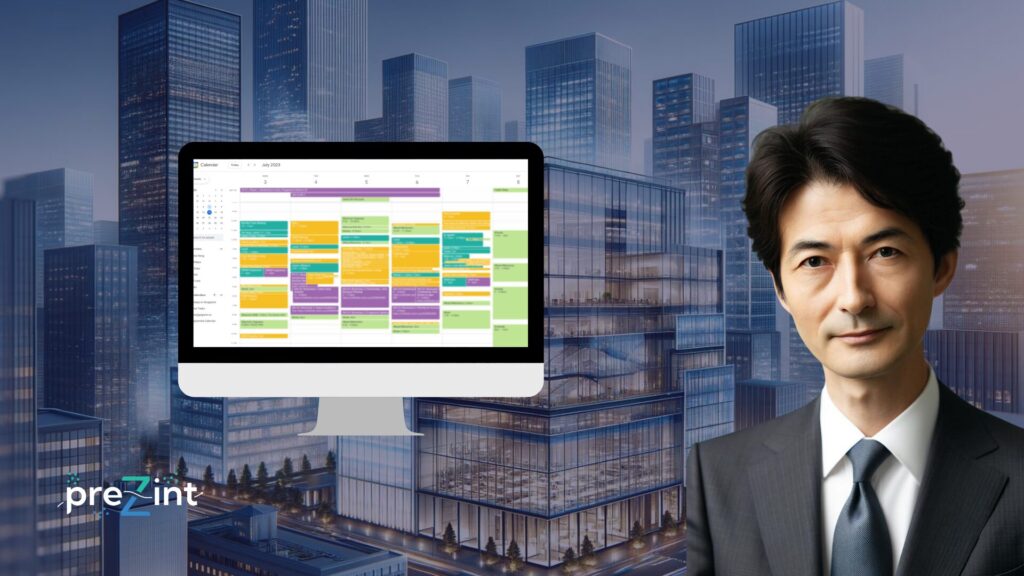
Live Demonstration
A sales representative & our expert will conduct a live demo at your desired location
Benefit: See for you industry how preZint can reduce operational costs by 30%


Book Your Demo
Fill out the form to book your demo
Click green button when done to be directed
to the calendar reservation page.
Your privacy is of our upmost concern. We will not share your information with any third parties. You can request that we delete your information at anytime.
Demo Is
What?
Your demo is the next step creating your customized preZint solution.
Below are some of the key points of the demo.
Below are some of the key points of the demo.
Questionnaire
Complete a questionnaire to understand
your companies specific & unique challenges
your companies specific & unique challenges
Benefit: Tailored insights to ensure
your demo addresses your exact needs
your demo addresses your exact needs


Scheduling
After questionnaire, reserve a date / time for demo.
Demo is held at your office or desired location
Demo is held at your office or desired location
Benefit: See preZint live in person
Live Demonstration
A sales representative & product specialist
will conduct a live demo at your desired location
will conduct a live demo at your desired location
Benefit: See for you industry how preZint
can reduce operational costs by 30%
can reduce operational costs by 30%

